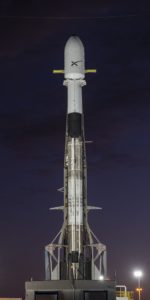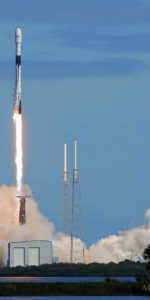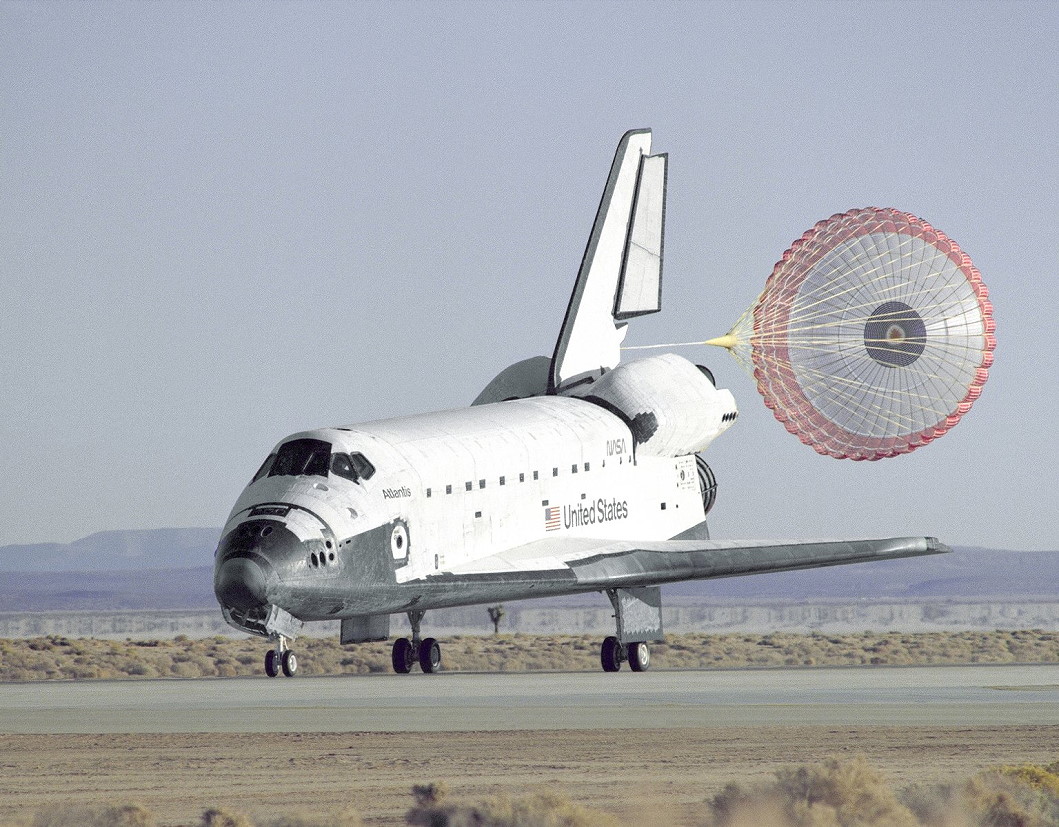
A quarter-century ago, this month, STS-66 Commander Don McMonagle received light-hearted authorization to “take Atlantis back to the skies”, after two years of maintenance, refurbishment and extensive modification. With a dozen previous flights under her belt, Atlantis had (almost) done it all: deployed two planetary probes, launched five Department of Defense missions—more than any of her sister shuttles—and taken citizens from the United States to Mexico and from Belgium to Italy into space.
But following the last of those missions, she was detailed to undertake the first docking with Russia’s Mir space station and later begin building the International Space Station (ISS). It was therefore a much more capable shuttle that veteran astronaut McMonagle found himself commanding on the morning of 3 November 1994 as he and his five crewmates steeled themselves for an 11-day flight, the longest of Atlantis’ career to date.
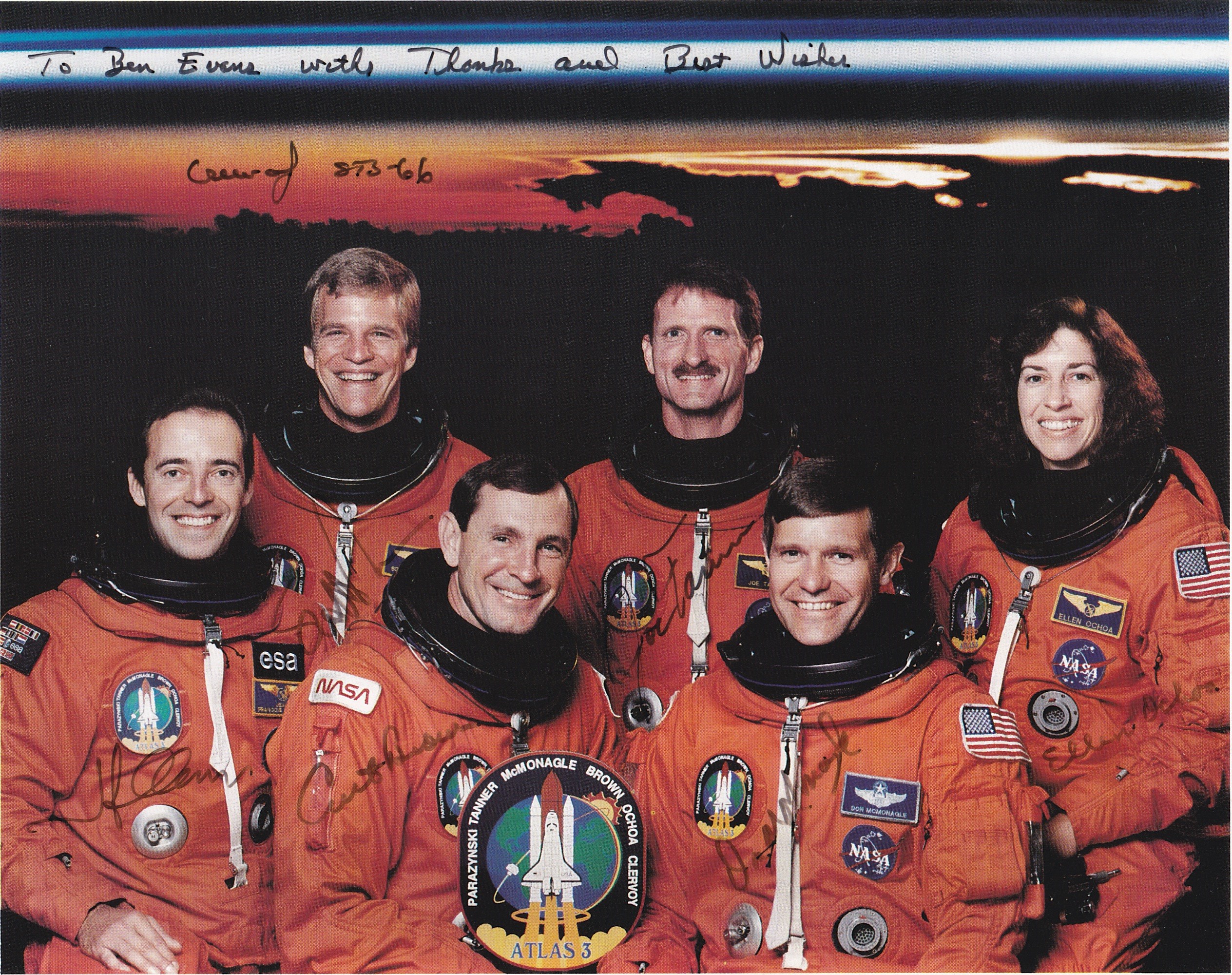
Three minutes late, due to potentially excessive windspeeds at one of the Transoceanic Abort Landing (TAL) sites, Atlantis roared into orbit at 11:59 a.m. EST. It was a lucky omen, for if that morning’s launch had been scrubbed NASA would have had to stand STS-66 down until at least 14 November, in order to replenish the cryogenic dewars aboard the CRISTA-SPAS payload, a set of cryogenic infrared spectrometers and telescopes to measure Earth’s atmosphere, attached to a German-built shuttle pallet satellite.
Some three hours after liftoff, Atlantis’ principal cargo—the ATLAS-3 atmospheric laboratory for applications and science—was powered-up and its seven instruments, all mounted onto a European-built Spacelab pallet, were running through their initial calibrations. The crew worked around the clock in two 12-hour shifts, with McMonagle leading Payload Commander Ellen Ochoa and Mission Specialist Joe Tanner Tanner on the “red” team and Pilot Curt Brown leading Mission Specialists Jean-Francois Clervoy of the European Space Agency (ESA) and Scott Parazynski on the “blue” team.
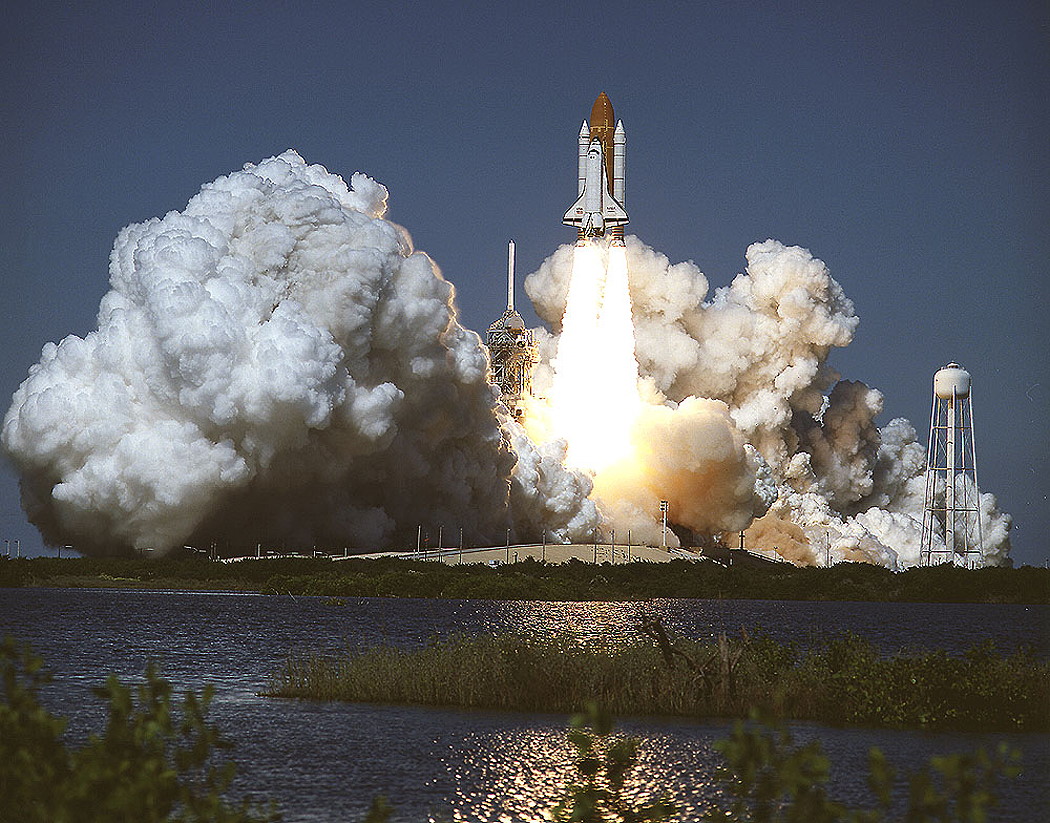
ATLAS-3 was the final member of a series of shuttle flights to observe the interaction between the Sun and Earth’s atmosphere, but with ATLAS-1 and ATLAS-2 having both flown in the springtime months of 1992 and 1993, this was the first occasion that the payload had taken measurements in the fall and winter. Consequently, one of the key focuses of ATLAS-3 was to observe the northern hemisphere during a period at which atmospheric processes began to “shift” from relatively quiescent summertime conditions to more active wintertime conditions.
It was already known that the chemical processes associated with the oft-publicized Antarctic “ozone hole” tended to peak in early October, when increased springtime sunlight struck air cooled during the southern hemisphere’s winter season and solar ultraviolet radiation triggered chemical reactions which were both creative and destructive of ozone. By late November, ozone-rich air from mid-latitudes mixed with Antarctic air to fill the lost ozone and chemicals such as nitrogen oxides began to consume free chlorine; this served to “repair” the lost ozone. ATLAS-3 therefore took place at a critical “intermediate” point of the year, during which time the ozone hole had begun the process of recovery, but had not yet dissipated. As such, ozone science was a key focus of ATLAS-3 research.
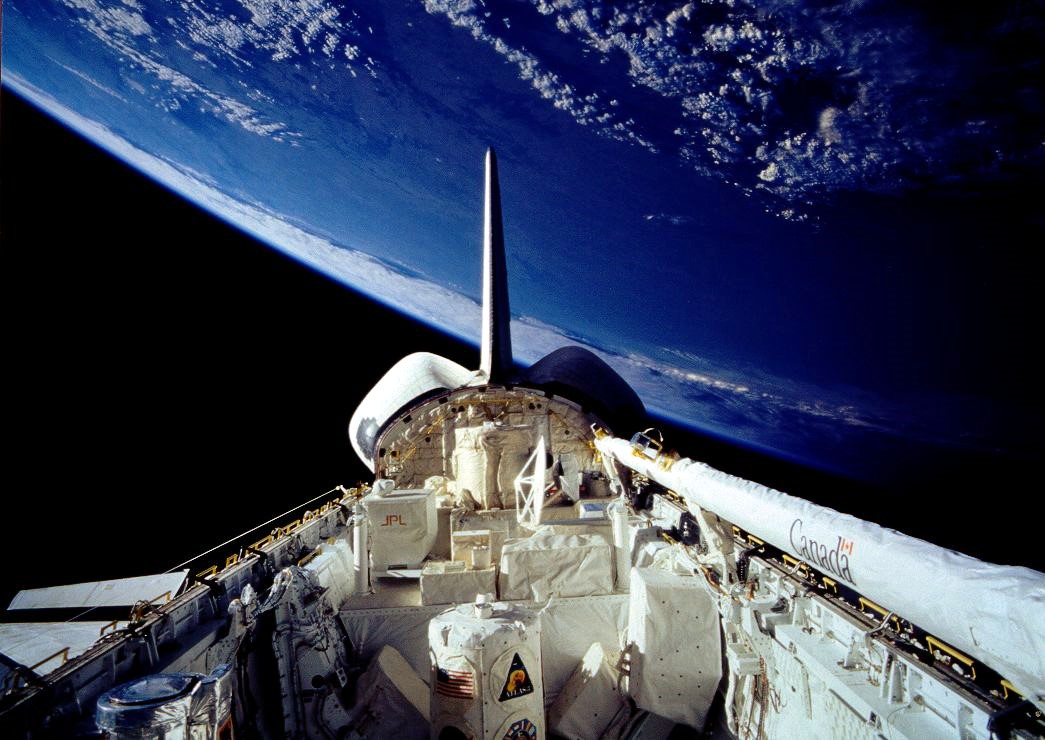
“Observations of both areas,” noted NASA’s STS-66 press kit, “should provide valuable data for comparison with the spring data of ATLAS-1 and 2.” After STS-66, preliminary analysis in the post-flight report indicated the Antarctic hole to be a self-contained region. Although it had seen a large increase in quantities of Freon-22—a chemical which was “used as a replacement for chloroflurocarbons (CFCs)—in the stratosphere, it was not as great a threat as CFCs. “It is, however, a growing source of stratospheric chlorine,” cautioned the report. “Also of note is the lack of a direct link between the Antarctic ozone hole and ozone depletion in the mid-latitudes, indicating that there are atmospheric processes that are still not well understood.”
In a similar vein to the two missions which preceded it, ATLAS-3 sought to measure global temperatures in the middle atmosphere, together with trace-gas concentrations, and to provide this to the scientific community for comparison with data from other spacecraft. “The ATLAS-3 mission is the most complete global health check on the atmosphere that has ever been done,” explained Mission Scientist Tim Miller, “measuring more trace gases that are important in ozone chemistry than any previous research effort.”
All of its instruments had flown before, but several had been extensively modified in readiness for STS-66 and their precise objectives shifted slightly. One had benefited from an improved recorder controller to provide ground-based scientists with more data about its status and performance. The solar science experiments were also prepared for quite different results, compared to their predecessors; for during ATLAS-1 and ATLAS-2 the Sun had been at a period of near-maximum activity in the 1992-1993 timeframe, and on ATLAS-3 the crew directed the orbiter’s payload bay toward our parent star on no fewer than four occasions to investigate its behavior at a time when its cycle of activity was wearing down toward a “minimum” in 1996-1997.
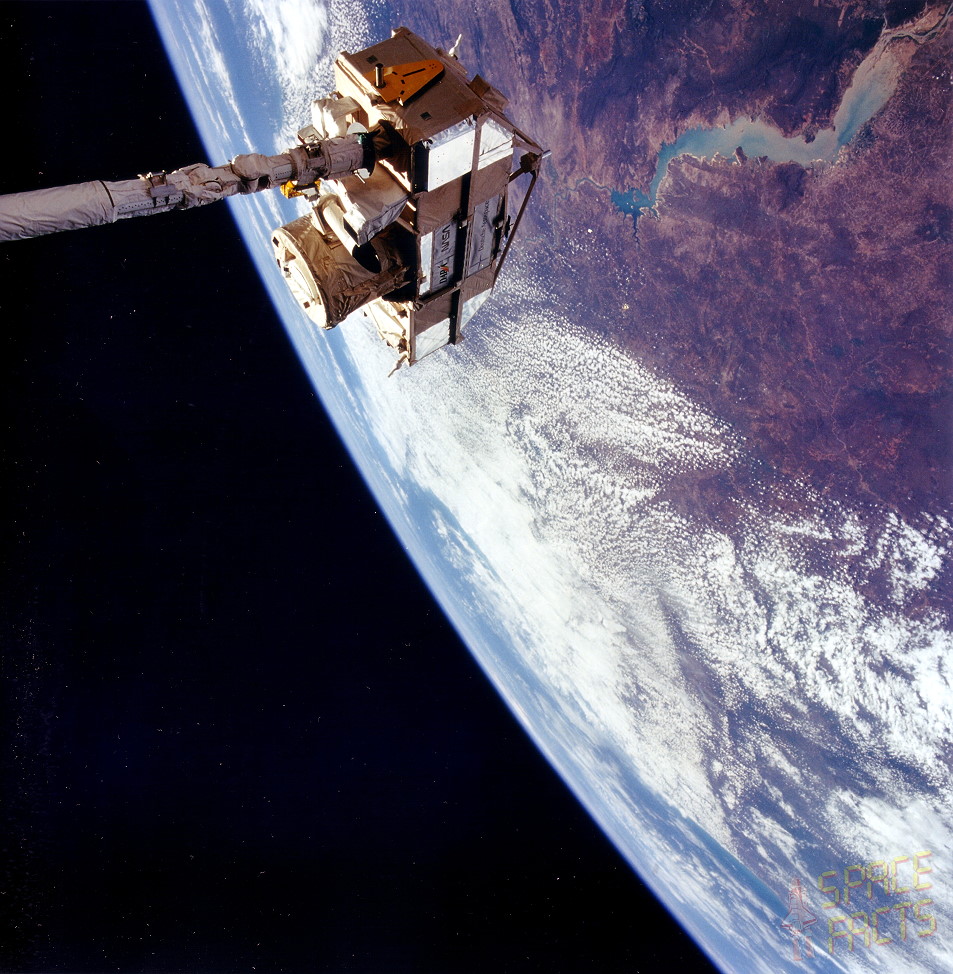
The instruments in Atlantis’ payload bay were complemented by two others attached to a free-flying atmospheric observatory, which was itself mounted atop the German-built Shuttle Pallet Satellite (SPAS). Like the ORFEUS-SPAS mission a year earlier, the observatory employed the uprated “ASTRO-SPAS” platform, capable of extended-duration operations, and it was intended that it should spend up to eight days in free flight. However, whereas ORFEUS was devoted to ultraviolet astronomy, the two instruments on the STS-66 payload were devoted to infrared observations of the middle and upper atmosphere. The first instrument was a German one, known as the Cryogenic Infrared Spectrometers and Telescopes for the Atmosphere (CRISTA), and sought to gather the first global information about medium- and small-scale disturbances in middle-atmosphere trace gases.
Provided by the University of Wuppertal, and first conceived in 1985, it was capable of scanning the horizon simultaneously in three directions, providing new data about disturbances induced by winds, wave interactions, turbulence, and other physical processes. “While the actual instrument was manufactured by industry,” explained Professor Dirk Offermann, who co-ordinated CRISTA science from NASA’s Marshall Space Flight Center in Huntsville, Ala., “students did the calculations, constructed the cryostat, designed the optics, then integrated the equipment with the help of university technicians.”
In fact, around 20 students from undergraduate to doctoral level had been involved in the project between 1985 and 1994. CRISTA consisted of three telescopes with four spectrometers to measure emissions in the near-infrared and far-infrared portions of the electromagnetic spectrum. It had the capacity to acquire complete vertical profiles of trace gases within a minute as the lines-of-sight were scanned through the atmosphere. Its measurement speed and high sensitivity derived from a cryogenic liquid helium vacuum container, which cooled its optics and detectors. Abutting CRISTA was the Middle Atmosphere High Resolution Spectrograph Investigation (MAHRSI). Developed by the U.S. Naval Research Laboratory (NRL) in Washington, D.C., this instrument was designed to scan the horizon to observe ultraviolet emissions from nitric oxide and hydroxyl in the middle atmosphere and lower thermosphere, between the altitudes of 25-75 miles (40-120 km). This region of the atmosphere is too high for high-altitude balloons to access and sounding rockets pass through it too quickly to gather useful data, making the capabilities of MAHRSI hugely important. Hydroxyl was known to contribute directly to the destruction of atmospheric ozone. “This information,” explained NASA’s press kit, “will be used to test many theories that have been based on assumed values and will provide the first global vertical measurements of hydroxyl in the stratosphere.”
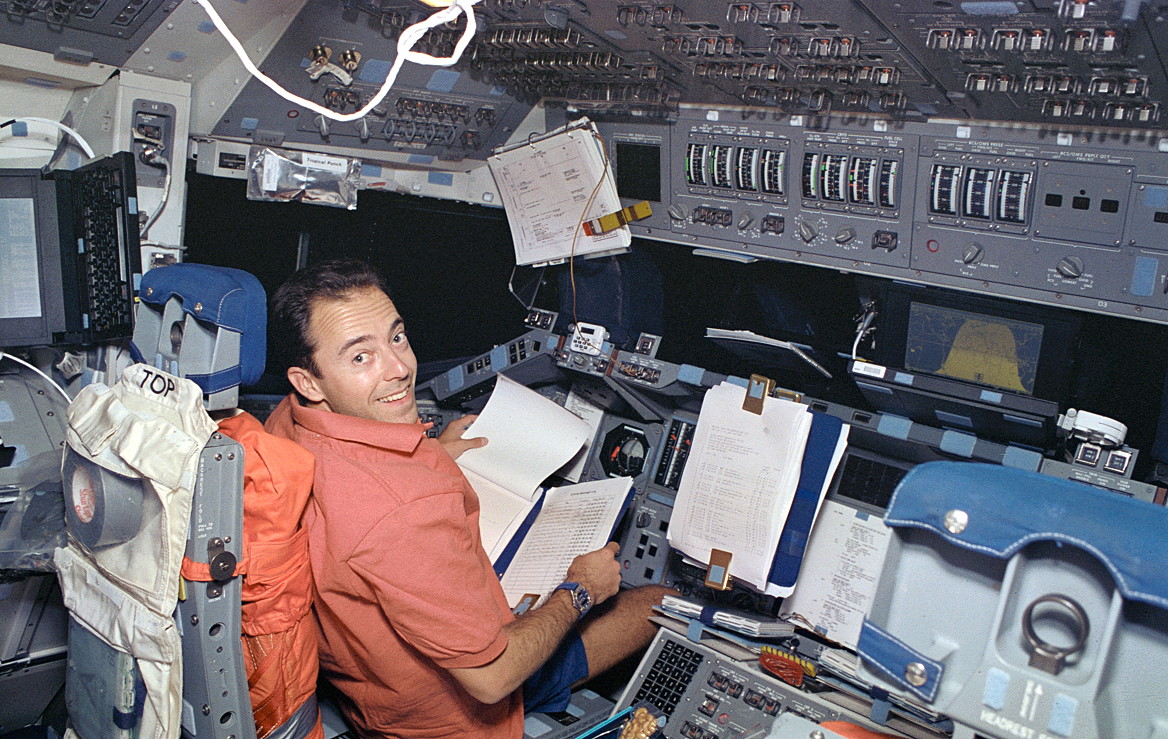
Preparations to deploy CRISTA-SPAS began a few hours after launch. Atlantis’ Canadian-built Remote Manipulator System (RMS) mechanical arm was checked out satisfactorily and at 4:45 p.m. EST on 3 November it was employed to grapple the payload. The arm was left “parked” overnight, with the satellite still firmly latched into the payload bay, until it was unberthed and released into space by Jean-Francois Clervoy at 7:50 a.m. on the 4th. Fittingly, perhaps, the deployment took place whilst Atlantis orbited high above Germany. Now physically separated from, and thus independent of, orbiter maneuvers, the 7,500-pound (3,400-kg) CRISTA-SPAS operated for the next eight days between 25-45 miles (40-70 km) “behind” Atlantis, communicating through the shuttle with its control station at the Kennedy Space Center (KSC) in Florida, every ten hours or so. The two instruments worked in conjunction for several tasks, including measurements of temperature and nitric oxide quantities at an altitude of 60 miles (100 km)—the coldest part of the atmosphere—in order to better understand the thermal balance and its role in ozone chemistry. At the same time, high-precision ozone-measuring balloons launched from the Hohenpeissenberg station in Germany and instrumented aircraft despatched from the west coast of Scotland, formed part of a vigorous ground-based campaign in conjunction with the satellite. In total, CRISTA gathered 180 hours of data, eclipsed slightly by MAHRSI with 200 hours, and it was remarked in NASA’s post-mission report that “current-generation orbital satellites would require almost six months to collect a data set as large as [was] gathered on this flight.”
During the rendezvous phase on 11 November, two exercises of note were performed. One was dramatically described as “The MAHRSI Football,” due to the elliptical shape of the pattern flown by Atlantis around the satellite. It involved MAHRSI making ultraviolet observations of the shuttle and its environment, including the enigmatic “glow” phenomena around its flight surfaces. CRISTA-SPAS was finally grappled by the RMS arm at 8:05 a.m. EST, as Atlantis flew to the southeast of New Zealand, and was berthed in the payload bay at 11:50 a.m. The second rendezvous exercise was labeled “Detailed Test Objective 835”—innocuous enough, it seemed, were it not for its subtitle: Mir Approach Demonstration. Atlantis’ next flight, in mid-1995, was destined to undertake the first shuttle docking with Russia’s Mir station and DTO 835 sought to evaluate a new rendezvous profile.
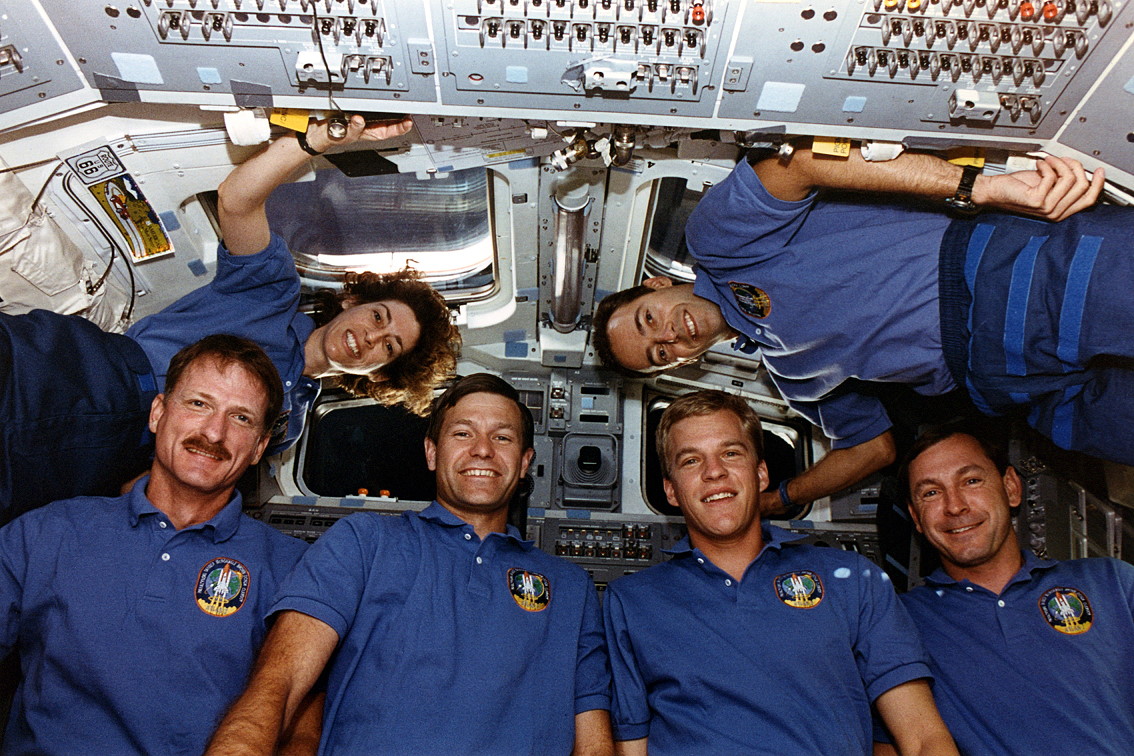
“Rather than approaching for the final approximately two miles (3.2 km) to CRISTA-SPAS from a point directly ahead of the satellite,” explained NASA’s press kit, “Atlantis will approach from beneath the satellite.” The orbiter would effectively trace and imaginary line, extending “upwards” from the center of Earth to the mass of CRISTA-SPAS. Known as “R-Bar” (or “Earth Radius Vector”), the profile differed fundamentally from the “V-Bar” (or “Velocity Vector”) technique employed on previous shuttle rendezvous missions. In approaching the target from “beneath,” it was possible for Atlantis to exploit the gravitational gradient to brake her approach.
In fact, because she would have to thrust against gravity to maintain the approach, this would also provide a margin of safety in the event of an Reaction Control System (RCS) thruster failure. Moreover, it was recognized that plume impingement would have to be minimised during proximity operations with Mir, lest the thrusters cause damage or deposit contaminants upon the station’s surfaces and, in particular, its solar panels. If such firings were necessary, using the R-Bar approach, they could be executed in a so-called “Low-Z” mode, whereby Atlantis would use slightly-offset thrusters on her nose and tail, such that the plumes were not aimed toward the station. Earlier in the mission, during the CRISTA-SPAS retrieval effort, Joe Tanner demonstrated a hand-held laser-ranging device which would be used on the shuttle-Mir missions to gather precise data throughout the rendezvous.
With the successful retrieval of CRISTA-SPAS, the mission of STS-66 was drawing inexorably toward its conclusion. Early on 14 November, the ATLAS-3 payload was deactivated and the crew prepared for their return to Earth. That return was hampered, in Florida, at least, by the ravages of Tropical Storm Gordon, which repeatedly battered the East Coast and the Caribbean with high winds, rain, and cloud from the 8th until the 21st. Both scheduled landing opportunities at KSC were thus called off and Don McMonagle guided his ship smoothly to a touchdown on concrete Runway 22 at Edwards Air Force Base, Calif., at 7:33 a.m. PST (10:33 a.m. EST), concluding the third 11-day shuttle mission in less than two months. Atlantis’ first deployment of the drag chute—and the shuttle program’s first reusable drag chute, at that—was uneventful and the attention of NASA quickly shifted sharply to her next mission, STS-71, scheduled for mid-1995, which would attempt the long-awaited first docking with Mir.
And with the drawing-down of the curtain on STS-66, Atlantis flew her final non-station mission for almost two decades. Not until STS-109, the final Hubble servicing mission, in May 2009, would she again journey to a destination other than an Earth-circling space station.
.
.
FOLLOW AmericaSpace on Facebook and Twitter!
.
.




